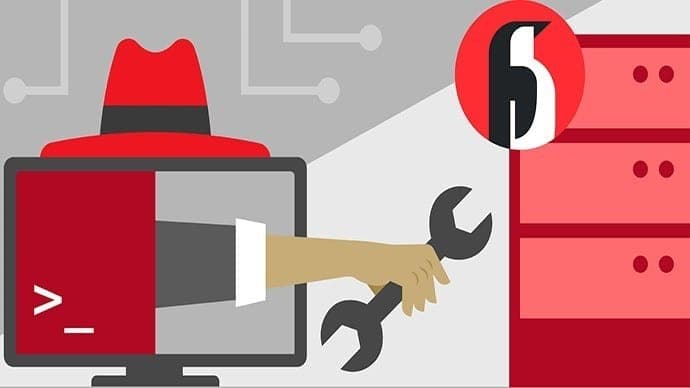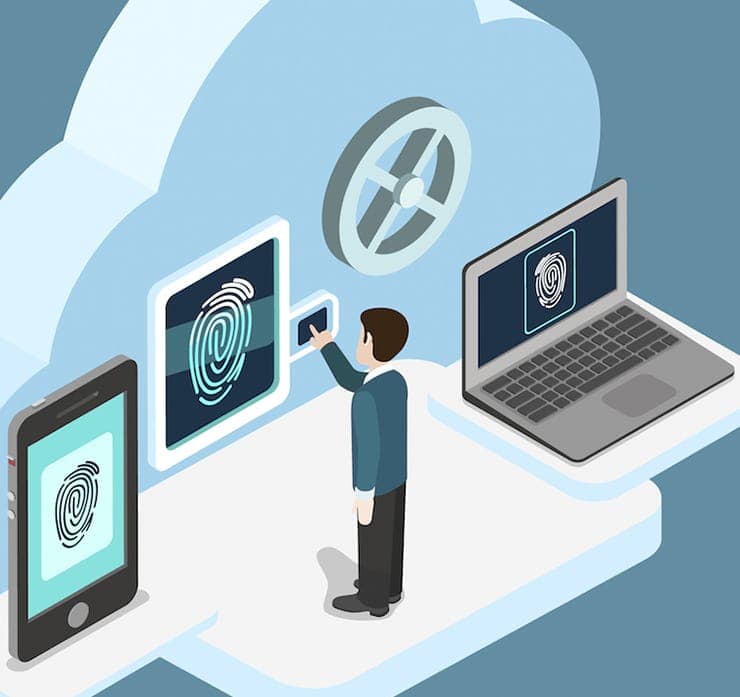Student Feedback
CS0-002: CompTIA CySA+ Certification Exam (CS0-002) Certification Video Training Course Outline
Identify Security Control Types
Threat Intelligence
Classifying Threats
Identify Security Control Types
CS0-002: CompTIA CySA+ Certification Exam (CS0-002) Certification Video Training Course Info
Step-by-Step CompTIA CySA+ CS0-002 Practice and Exam Preparation Course
Complete Cyber Threat Analyst Certification Training: Master Cybersecurity Detection and Response
What you will learn from this course
• Learn to detect, analyze, and respond to cyber threats using modern cybersecurity frameworks and tools
• Understand and implement MITRE ATT&CK framework to identify tactics, techniques, and procedures used by attackers
• Gain expertise in identifying vulnerabilities across systems, networks, and applications using advanced assessment techniques
• Perform remediation and mitigation strategies to secure digital assets and reduce the attack surface
• Acquire knowledge of cloud security and software vulnerabilities to protect modern enterprise environments
• Learn to manage security infrastructure and deploy network security solutions effectively
• Implement identity and access management strategies to control access and secure sensitive information
• Explore cryptography concepts and apply encryption techniques to secure communications and data
• Ensure hardware security while learning best practices in software assurance to maintain system integrity
• Monitor, log, and analyze security data to detect unusual activity and prevent security breaches
• Execute security configuration changes and manage policies to enhance organizational cybersecurity posture
• Understand incident response processes and develop skills to manage and resolve cybersecurity incidents
• Utilize digital forensic techniques to investigate attacks and identify sources of compromise
• Analyze indicators of compromise (IoCs) to detect, respond, and remediate security events efficiently
• Perform compliance checks and assessments to meet organizational and regulatory requirements
• Conduct risk assessments and evaluate business impacts to inform decision-making and improve security strategy
Learning Objectives
The primary objective of this course is to equip learners with the practical and theoretical skills required to become effective cybersecurity analysts. Participants will gain hands-on experience in threat detection, incident response, and vulnerability management. By the end of the course, learners will be able to monitor, analyze, and respond to security events across various platforms and infrastructures. Additionally, learners will acquire advanced skills in digital forensics, cryptography, and risk management, preparing them for real-world cybersecurity challenges. The course emphasizes the development of analytical skills, problem-solving abilities, and decision-making capabilities critical for cybersecurity professionals. Learners will also gain proficiency in using tools and techniques that are widely adopted in the industry, including security monitoring software, vulnerability scanners, and incident response platforms. Through practical exercises and scenario-based training, participants will learn to identify attack patterns, detect anomalies, and implement effective mitigation strategies. This approach ensures that learners are not only prepared for certification exams but also for the responsibilities and challenges faced by cybersecurity analysts in professional environments.
Target Audience
This course is designed for professionals who are looking to build or advance their career in cybersecurity and information security. It is ideal for security analysts working in organizations of any size who are responsible for monitoring and protecting digital assets. Threat intelligence analysts seeking hands-on experience in identifying and mitigating cyber threats will benefit from this program. Information security managers aiming to enhance their technical expertise and implement security strategies across their organizations are encouraged to enroll. Security engineers focused on protecting network and system infrastructures will gain valuable insights into proactive defense mechanisms. Application security analysts seeking to secure software and web applications will find the course highly beneficial. Incident responders and handlers who manage real-world security events will acquire advanced skills to improve response times and resolution efficiency. Compliance analysts responsible for meeting regulatory and organizational standards will develop the tools necessary to conduct effective audits and assessments. Threat hunters looking to identify and remediate advanced persistent threats will benefit from practical exercises and scenario-based learning. Information security officers seeking to strengthen their overall organizational security posture will gain actionable knowledge to implement policies and best practices across teams.
Requirements
Participants are expected to have access to a personal computer capable of running multiple operating systems, including Windows, Linux, and Ubuntu. The course requires learners to have an intermediate understanding of computer systems, networking concepts, and basic cybersecurity principles. Hands-on experience with common operating systems, network devices, and security tools will enhance the learning experience. Participants should be able to navigate different operating environments, configure software, and execute basic commands in various operating systems. Access to virtualization tools or cloud platforms is recommended to perform practical exercises and simulations. Learners will engage in scenario-based training that requires interaction with real-world cybersecurity environments, making access to a fully functional lab setup advantageous. A willingness to explore advanced cybersecurity concepts, follow best practices, and apply theoretical knowledge to practical scenarios is essential.
Prerequisites
The course is designed for learners with foundational knowledge of cybersecurity concepts. Candidates should be familiar with basic networking, operating system fundamentals, and information security principles. Prior experience with Windows, Linux, or other operating systems is highly recommended to perform hands-on exercises effectively. A basic understanding of security tools, monitoring systems, and risk management concepts will provide a strong foundation for this intermediate-level course. Learners should have exposure to general IT operations, including system administration and network troubleshooting, to fully benefit from the advanced techniques covered. While prior certification is not mandatory, having basic security credentials or training can enhance comprehension and performance during the course. An analytical mindset, attention to detail, and problem-solving capabilities are also important prerequisites for success.
Course Modules / Sections
The CompTIA Cyber Security Analyst course is designed as a comprehensive, structured learning experience, divided into multiple modules to provide a step-by-step approach to mastering cybersecurity concepts and practical skills. Each module focuses on critical aspects of threat detection, vulnerability management, incident response, and security operations, enabling learners to progressively build expertise.
The first module introduces the foundational concepts of cybersecurity, including an overview of security principles, understanding common cyber threats, and learning the methodologies used by attackers. Learners will explore the MITRE ATT&CK framework in detail, gaining insights into attack techniques, tactics, and procedures. This section also emphasizes the importance of threat intelligence and proactive security measures.
The second module focuses on vulnerability management and risk assessment. Participants will learn how to identify system vulnerabilities using advanced scanning tools and assessment frameworks. The module covers vulnerability lifecycle management, risk evaluation, and prioritization strategies, enabling learners to effectively mitigate potential threats before they can be exploited. Additionally, learners will understand compliance requirements and how to align vulnerability management practices with industry standards.
The third module dives into threat detection and monitoring. Participants will learn how to collect, aggregate, and analyze security-related data from various sources, including network logs, system logs, and endpoint monitoring tools. The module introduces learners to Security Information and Event Management (SIEM) systems, intrusion detection systems, and behavioral analytics, providing the knowledge required to identify suspicious activity and anomalies.
The fourth module emphasizes incident response and digital forensics. Learners will gain practical skills in responding to security incidents, following structured incident response procedures, and documenting events. The module covers forensic investigation techniques, evidence collection, chain of custody, and analyzing indicators of compromise (IoCs). Participants will also learn how to conduct post-incident reviews to enhance security strategies and prevent future breaches.
The fifth module covers cloud security and software assurance. Participants will learn how to secure cloud environments, including public, private, and hybrid infrastructures. This section also focuses on application security, software assurance practices, and methods to protect critical digital assets from modern threats such as malware, ransomware, and advanced persistent threats (APTs).
The sixth module explores identity and access management, encryption, and hardware security. Learners will understand how to implement access controls, multi-factor authentication, and privilege management to safeguard sensitive information. Additionally, this module covers cryptography techniques, secure communication protocols, and hardware-level security practices to ensure comprehensive protection across the organization.
The final module integrates all the knowledge and skills acquired in previous sections through hands-on labs, scenario-based exercises, and simulated threat scenarios. Participants will apply learned concepts to real-world situations, conducting end-to-end security assessments, detecting and mitigating attacks, and performing incident response exercises to solidify their expertise.
Key Topics Covered
This course thoroughly addresses a wide range of topics to prepare learners for professional roles in cybersecurity. The topics include advanced threat detection, vulnerability management, incident response, cloud and software security, identity and access management, cryptography, hardware protection, and digital forensics.
The curriculum begins with an in-depth understanding of the threat landscape, including common attack vectors, cybercrime methodologies, and evolving security challenges. Learners will explore detailed attack frameworks such as MITRE ATT&CK and understand the attack kill chain, which provides insight into how adversaries plan, execute, and maintain cyberattacks.
Vulnerability assessment is a critical component of the course. Learners will gain hands-on experience in scanning systems, networks, and applications to identify weaknesses. They will learn to evaluate the severity of vulnerabilities, prioritize remediation efforts, and implement effective mitigation strategies. The course also emphasizes compliance with regulatory standards and frameworks, ensuring that participants understand how to align security practices with organizational and legal requirements.
Threat detection and monitoring form a core area of focus. Participants will be trained to monitor logs, analyze security events, and detect anomalies that may indicate malicious activity. Using SIEM platforms, intrusion detection systems, and automated monitoring tools, learners will develop the ability to detect and respond to threats in real time. Behavioral analytics, pattern recognition, and anomaly detection techniques are emphasized to provide comprehensive threat visibility.
Incident response is another central topic. The course covers the full lifecycle of incident management, from initial detection to containment, eradication, and recovery. Learners will practice documenting incidents, analyzing IoCs, and conducting post-incident reviews to strengthen future defenses. Digital forensic techniques are integrated into this module, providing skills to investigate attacks, recover compromised data, and maintain evidence integrity.
Cloud security and software assurance topics include securing cloud environments, assessing software vulnerabilities, and implementing best practices for application security. Participants will learn about common threats to cloud infrastructures, such as misconfigurations, insecure APIs, and unauthorized access, and develop strategies to mitigate these risks. The course also addresses software assurance principles to ensure secure development and deployment of applications.
Identity and access management, cryptography, and hardware security are explored in depth. Participants will implement access control measures, privilege management, and multi-factor authentication to secure systems and data. Cryptography techniques, encryption algorithms, secure communication protocols, and hardware-based security mechanisms are covered to provide end-to-end protection.
The course concludes with advanced security integration, where learners apply all skills through real-world labs and exercises. Key activities include conducting full-scale security assessments, performing threat hunting, implementing incident response plans, and conducting risk assessments to evaluate business impact. These practical exercises ensure that participants can translate theoretical knowledge into actionable skills applicable in professional environments.
Teaching Methodology
The course employs a hands-on, practical approach to ensure learners gain real-world cybersecurity experience. Interactive lectures, guided demonstrations, and scenario-based exercises form the foundation of the teaching methodology. Learners are exposed to multiple operating systems, networks, and cloud environments to simulate realistic conditions faced by cybersecurity analysts.
Labs and exercises are designed to reinforce theoretical concepts by allowing participants to apply their skills in controlled environments. Participants will practice threat detection, vulnerability scanning, and incident response in virtualized labs or cloud-based platforms. These exercises emphasize problem-solving, critical thinking, and decision-making, enabling learners to address complex cybersecurity challenges effectively.
Scenario-based learning is a key component of the methodology. Participants engage in simulations that replicate real-world attacks, data breaches, and system compromises. These exercises provide the opportunity to practice detection, analysis, remediation, and recovery procedures, building confidence in applying knowledge under pressure.
The teaching methodology also integrates collaborative learning, where learners work in teams to conduct assessments, investigate incidents, and propose mitigation strategies. This approach mirrors professional environments, enhancing communication, teamwork, and leadership skills essential for cybersecurity roles. Continuous feedback from instructors helps learners refine their approach, understand best practices, and develop professional competence.
Additionally, learners are introduced to industry-standard tools and platforms commonly used by cybersecurity professionals. Training includes the use of SIEM software, vulnerability scanners, forensic analysis tools, and threat intelligence platforms, ensuring participants are familiar with tools they will encounter in the workplace.
The course also emphasizes analytical skills and threat intelligence application. Learners are trained to interpret data, identify patterns, and correlate information from multiple sources. This analytical approach ensures that participants can make informed decisions, anticipate potential attacks, and implement proactive security measures.
Assessment & Evaluation
The course incorporates continuous assessment and evaluation to ensure that learners are effectively absorbing knowledge and applying practical skills. Assessments include practical lab exercises, scenario-based simulations, quizzes, and written evaluations designed to test both theoretical understanding and hands-on abilities.
Practical labs serve as the primary form of assessment. Participants are evaluated on their ability to detect vulnerabilities, analyze threats, respond to incidents, and implement security measures. Lab exercises are designed to reflect real-world cybersecurity environments, providing learners with an opportunity to demonstrate proficiency in applying course concepts.
Scenario-based assessments further test learners’ skills by simulating complex cyberattacks, system compromises, and data breaches. Participants are required to analyze attack patterns, investigate incidents, implement mitigation strategies, and document findings. These exercises evaluate analytical thinking, problem-solving, and decision-making abilities in realistic contexts.
Quizzes and written assessments are used to measure understanding of theoretical concepts, including threat frameworks, attack techniques, security policies, and compliance standards. Participants must demonstrate knowledge of key topics such as the attack kill chain, vulnerability assessment methodologies, incident response processes, and risk management principles.
Evaluation also includes continuous feedback from instructors during practical exercises. This approach ensures that learners receive guidance on improving techniques, addressing gaps in knowledge, and refining their problem-solving approach. Feedback emphasizes best practices, industry standards, and professional competencies critical for cybersecurity analysts.
Final assessments combine practical and theoretical evaluations to determine overall competency. Participants must demonstrate proficiency in threat detection, vulnerability management, incident response, cloud and software security, identity and access management, cryptography, hardware protection, and digital forensics. Successful completion of these assessments indicates readiness to apply skills in professional cybersecurity roles and prepare for the CompTIA CySA+ certification exam.
Benefits of the Course
Enrolling in the CompTIA Cyber Security Analyst course offers numerous benefits for both aspiring and experienced cybersecurity professionals. The course equips learners with practical skills and theoretical knowledge essential for monitoring, detecting, and mitigating cybersecurity threats across diverse IT environments. By mastering threat detection, vulnerability management, and incident response, participants become highly capable in protecting critical digital assets and supporting organizational security strategies.
Participants gain proficiency in using industry-standard tools and platforms, including Security Information and Event Management (SIEM) systems, intrusion detection tools, vulnerability scanners, and forensic analysis software. These skills ensure that learners can effectively analyze security events, detect anomalies, and respond to incidents in real time. Practical experience with these tools enhances career readiness and makes participants highly valuable to employers.
The course also strengthens analytical and problem-solving abilities. Learners develop the capacity to interpret complex data, recognize patterns of cyber threats, and make informed decisions to protect organizational infrastructure. This analytical training is critical for roles such as security analysts, threat hunters, incident responders, and information security officers.
Certification preparation is another key benefit. The CompTIA CySA+ course is designed to align with exam objectives, providing candidates with the knowledge and hands-on experience needed to succeed in the certification process. Successfully obtaining the certification demonstrates a recognized level of competence in cybersecurity, increasing professional credibility and career prospects.
Participants also benefit from exposure to real-world cybersecurity scenarios. Scenario-based training and labs replicate challenges faced by organizations, including attacks on networks, systems, and cloud environments. By applying learned concepts in these simulations, learners gain confidence and practical experience that can be directly applied in professional roles.
Additionally, the course supports career advancement. Cybersecurity is a rapidly growing field with a significant skills gap, leading to high demand for trained professionals. Completion of this course enhances employability, opens up opportunities for promotions, and may result in higher earning potential. Learners gain a competitive edge in the job market by acquiring a blend of technical skills, practical expertise, and recognized certification.
The course also promotes continuous learning and professional development. Cybersecurity is constantly evolving, and the knowledge and methodologies gained in this course provide a foundation for pursuing advanced certifications and specialized training in areas such as penetration testing, threat intelligence, and cloud security.
Course Duration
The CompTIA Cyber Security Analyst course is structured to provide comprehensive training over a well-paced timeline, balancing theoretical knowledge with hands-on practice. The total duration of the course is designed to accommodate both full-time learners and working professionals, offering flexibility while ensuring mastery of key concepts and practical skills.
Typically, the course spans approximately 40 to 50 hours of structured instruction, which includes interactive lectures, guided demonstrations, and scenario-based exercises. Each module is designed to focus on specific cybersecurity domains, allowing learners to progressively build expertise and apply knowledge in practical settings.
Hands-on labs and exercises form a significant portion of the course duration. These activities are carefully timed to provide sufficient practice in threat detection, vulnerability assessment, incident response, and forensic analysis. Learners engage in exercises that simulate real-world environments, requiring them to implement security controls, detect anomalies, and respond to cyber incidents effectively.
Self-paced learning options are often available to allow participants to progress through the material according to their individual schedules. This flexibility ensures that learners can dedicate appropriate time to studying complex topics, practicing hands-on skills, and reviewing key concepts as needed.
The course also includes periodic assessments and evaluations that contribute to the overall learning experience. These assessments are scheduled throughout the duration of the course to monitor progress, reinforce understanding, and identify areas for improvement. Continuous evaluation ensures that learners remain engaged and achieve competency in all critical areas of cybersecurity.
By the end of the course duration, participants will have developed both the practical skills and theoretical knowledge required to excel as cybersecurity analysts. The structured timeline ensures a balance between learning new concepts, applying skills in practice, and preparing for professional certification.
Tools & Resources Required
To maximize the learning experience and practical outcomes, the course requires participants to have access to certain tools and resources. These tools are essential for hands-on exercises, threat detection simulations, and vulnerability assessments.
Participants should have a personal computer with sufficient processing power, memory, and storage to run multiple operating systems and virtualization software. Access to Windows, Linux, and Ubuntu operating systems is recommended to provide exposure to different environments commonly encountered in professional cybersecurity roles. Familiarity with navigating these systems is essential for completing practical exercises.
Virtualization platforms, such as VMware or VirtualBox, are required to create isolated lab environments. These platforms allow learners to simulate networks, deploy virtual machines, and practice attack detection and response without impacting their primary systems. Virtual labs provide a safe and controlled space for experimentation and skill development.
Cloud platforms and services are also utilized in the course to provide experience in securing modern enterprise environments. Participants may need access to platforms such as AWS, Microsoft Azure, or Google Cloud to perform cloud security exercises, understand misconfigurations, and implement protective measures for cloud-based assets.
Security tools and software are integral to the course experience. Learners will use vulnerability scanners, SIEM platforms, intrusion detection systems, and forensic analysis tools to gain hands-on experience. These tools help learners identify vulnerabilities, monitor network traffic, detect anomalies, and investigate incidents effectively. Practical familiarity with these tools is critical for professional readiness.
Reference materials, including course manuals, digital guides, and practice exercises, are provided to support learning. These resources offer detailed explanations of cybersecurity concepts, step-by-step lab instructions, and scenario-based exercises to reinforce theoretical knowledge. Supplementary resources, such as whitepapers, case studies, and online tutorials, are also recommended to deepen understanding and provide additional context.
Reliable internet access is necessary for accessing online labs, virtual environments, and digital learning materials. Participants should ensure that their systems meet technical requirements for smooth interaction with online resources, virtual machines, and cloud services.
The combination of these tools and resources ensures that learners gain practical experience in environments that closely resemble real-world cybersecurity settings. By using industry-standard platforms and software, participants develop skills that are directly applicable to professional roles, enhancing both their technical competence and career readiness.
Career Opportunities
The CompTIA Cyber Security Analyst course opens a wide range of career opportunities for professionals in cybersecurity and information security. Graduates of this course are equipped with practical skills and theoretical knowledge that are highly sought after in today’s technology-driven organizations. The demand for skilled cybersecurity analysts continues to grow as businesses face increasing cyber threats, regulatory requirements, and the need to protect critical digital assets.
Security analysts are among the primary career paths for those completing this course. These professionals monitor and defend organizational networks, systems, and applications from cyber threats. They leverage tools and frameworks learned in the course to detect, analyze, and respond to attacks, ensuring the confidentiality, integrity, and availability of data.
Threat intelligence analysts also benefit from this training. They gather, interpret, and analyze information about potential and existing cyber threats. By applying the methodologies and frameworks covered in the course, they are able to provide actionable insights to strengthen organizational security.
Information security managers can enhance their strategic and operational capabilities through this course. The skills acquired enable them to implement security policies, manage teams, and oversee organizational cybersecurity initiatives. With expertise in risk assessment, compliance, and incident response, they are prepared to protect critical business processes and infrastructure.
Security engineers are another career path supported by this course. These professionals design, implement, and maintain secure networks and systems. By understanding vulnerabilities, mitigation strategies, and threat detection techniques, security engineers can build robust defenses and reduce organizational risk.
Application security analysts gain valuable expertise in securing software and applications. They apply course knowledge to identify vulnerabilities, implement secure coding practices, and conduct application assessments. This ensures that software deployed within organizations is resilient to attacks.
Incident responders or handlers are trained to manage cybersecurity events, containing, mitigating, and recovering from attacks. The hands-on labs and scenario-based exercises in this course provide the experience necessary to respond effectively under pressure and follow structured incident response protocols.
Compliance analysts use the skills learned in this course to ensure that organizations meet regulatory and industry standards. They perform audits, assess controls, and verify that security measures align with legal requirements and best practices.
Threat hunters specialize in proactively identifying hidden threats and advanced persistent threats (APTs) within networks. By analyzing security data, indicators of compromise, and attack patterns, they prevent attacks before they cause significant damage.
Information security officers overseeing the overall security posture of organizations are also supported by this course. They apply the strategic knowledge, incident management skills, and technical expertise gained to protect digital assets, maintain regulatory compliance, and lead organizational security initiatives.
Graduates can also explore additional specialized roles in cybersecurity, such as penetration testing, cloud security, and digital forensics. The foundational knowledge acquired in this course enables learners to pursue advanced certifications and career paths, enhancing professional growth and marketability.
Conclusion
The CompTIA Cyber Security Analyst course is a comprehensive, intermediate-level program that equips participants with the knowledge, skills, and practical experience needed to excel in the cybersecurity industry. By covering key areas such as threat detection, vulnerability assessment, incident response, cloud security, identity and access management, cryptography, and digital forensics, the course prepares learners to handle real-world cybersecurity challenges effectively.
Through a combination of theoretical instruction, scenario-based exercises, and hands-on labs, participants develop the ability to analyze threats, mitigate risks, and respond to incidents with confidence. The course also emphasizes the use of industry-standard tools and platforms, providing practical experience that is directly applicable to professional roles.
Completing the course demonstrates proficiency in critical cybersecurity domains and prepares participants for the CompTIA CySA+ certification exam. Achieving this certification validates technical competence and enhances career prospects, making graduates highly competitive in the job market. The skills acquired are applicable across various industries, including finance, healthcare, government, technology, and manufacturing, where cybersecurity remains a critical priority.
The course also provides long-term career benefits by enabling participants to pursue advanced certifications and specialized training in areas such as penetration testing, threat intelligence, cloud security, and digital forensics. Continuous skill development ensures that learners remain relevant in a constantly evolving field, capable of adapting to emerging threats and technologies.
Participants gain analytical thinking, problem-solving abilities, and practical experience, empowering them to take on diverse roles such as security analyst, threat intelligence analyst, security engineer, incident responder, application security analyst, compliance analyst, and information security officer. The broad scope of career options, combined with the growing demand for skilled professionals, ensures excellent opportunities for career growth and advancement.
The course is structured to support learners of varying backgrounds, providing flexibility, guided instruction, and practical exercises to build confidence and competence. By the end of the program, participants are equipped with the tools, knowledge, and hands-on experience necessary to protect organizational infrastructure, manage cybersecurity risks, and respond effectively to incidents.
In summary, the CompTIA Cyber Security Analyst course offers a clear pathway to a successful career in cybersecurity. It blends foundational knowledge with practical application, preparing learners to meet professional demands, achieve certification, and pursue continuous growth in a dynamic industry. Completing this course ensures participants are prepared to enter the workforce as skilled, confident cybersecurity professionals capable of defending organizations against modern threats and contributing to the overall security posture of their organizations.
Enroll today
Take the next step in your cybersecurity career by enrolling in the CompTIA Cyber Security Analyst course today. Gain access to a structured curriculum that combines expert-led instruction, hands-on labs, scenario-based exercises, and industry-standard tools. Enhance your technical skills, develop practical experience, and prepare for the CompTIA CySA+ certification exam with confidence.
This course is ideal for both aspiring and experienced cybersecurity professionals seeking to advance their careers, improve employability, and increase earning potential. By enrolling, you will gain the expertise needed to monitor, detect, and respond to threats effectively, manage vulnerabilities, implement security controls, and contribute to the security and resilience of any organization.
Enroll today to unlock opportunities in security analysis, threat intelligence, incident response, application security, compliance, and beyond. Secure your future in a rapidly growing field, gain a competitive advantage, and become a skilled cybersecurity professional capable of protecting critical digital assets in any environment.













